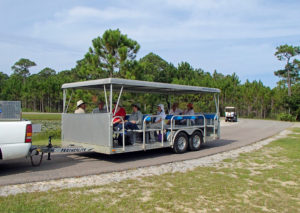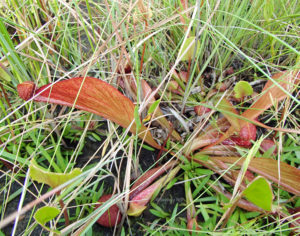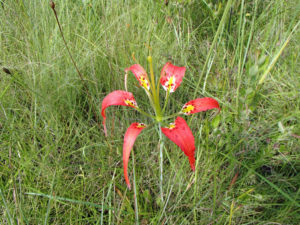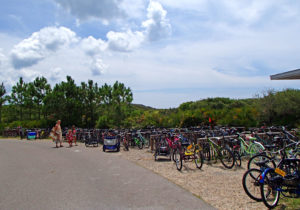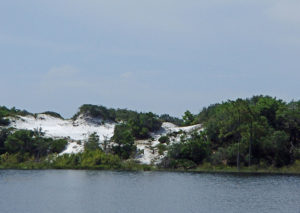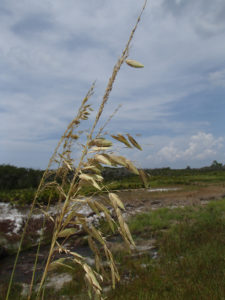
Algae growth from elevated nitrate levels chokes out grasses in Econfina Creek
I have prepared a brief statement in response to FL Representative Matt Gaetz’s proposed bill to dismantle the Environmental Protection Agency.
My name is Beverly Hill, and in addition to being an outdoor lover and kayaking enthusiast, I am also a Florida Master Naturalist and I strongly disagree with Representative Gaetz’s position to dismantle the EPA. I don’t share his optimism that Florida regulators would be able to protect our waterways, much less be able to force our neighbors to the north of us into complying with regulations to prevent contaminates from flowing downstream or being injected into the water table. I have a few examples to illustrate my point.
On July 26th, 2016, the Florida Environmental Regulatory Commission (an unpaid volunteer committee appointed by the Governor) voted to approve higher levels of toxins that can be discharged into Florida’s rivers, lakes, streams, and estuaries, including the cancer causing agent, Benzene, for which approved levels were doubled. Drew Bartlett, DEP’s deputy secretary for ecosystem restoration, said the new standards would protect the average Floridian at a cancer-risk level of one in a million. Others would have higher or lower protection depending on how much they weigh and how much fish and water they consume.
On August 27, 2016, Mosiac, a fertilizer plant in Mulberry, Fl, leaked over 215 million gallons of radioactive* water into the Florida Aquifer which supplies drinking water to millions of Floridians. The State of Florida failed to notify the public of the contamination for 19 days after the event. Mosaic is currently seeking new permits to expand their phosphate mining operation in Manatee County.
The Sabal Pipeline is a 3.2 billion dollar pipeline owned jointly by Spectra Energy, Duke Energy and Florida Power & Light, created to transport natural fracked gas to Florida Energy plants. This pipeline will tunnel under the Withlacoochee, Suwannee and Santa Fe rivers and cross dozens of watersheds that are vital to the health of Florida’s springs and aquifer.
And in Miami, Florida Power & Light is pushing to store radioactive waste in a lower water table beneath the Florida Aquifer in a layer named the Boulder Zone. Research has shown that contamination can filter back up into the main aquifer, as well as having the potential to pollute Biscanye Bay.
In closing, it would appear that a push to dismantle the EPA is not for the benefit of Americans or Florida’s residents, but for the sole purpose of furthering Corporate interests. I urge Representative Gaetz to be a Champion for Florida and withdraw his proposed bill.
Notes:
For those that are unfamiliar with Florida’s karst system, it is a porous layer of limestone through which groundwater filters down into the aquifer.
Phosphogypsum is a radioactive by-product of phosphate mining.
Gaetz said Reps. Steven Palazzo (R-MS), Thomas Massie (R-KY) and Barry Loudermilk (R-GA) have agreed to co-sponsor a bill to the House Committee on Natural Resources to eliminate the agency.
Citations:
Miami News Times http://www.miaminewtimes.com/news/fpl-wins-battle-to-store-radioactive-waste-under-miamis-drinking-water-aquifer-9059210
Bradenton Herald http://www.bradenton.com/opinion/editorials/article128650939.html
Tallahassee Democrat http://www.tallahassee.com/story/news/2016/12/17/sabal-trail-pipeline-cuts-through-heart-springs-country/95470950/
Tampa Bay Times http://www.tampabay.com/news/environment/water/mosaic-reports-third-spill-at-one-of-its-plants-the-second-under-new/2298452
Pensacola News Journal http://www.pnj.com/story/news/politics/2017/02/02/obliterating-epa-would-create-chaos-experts-say/97399494/




















